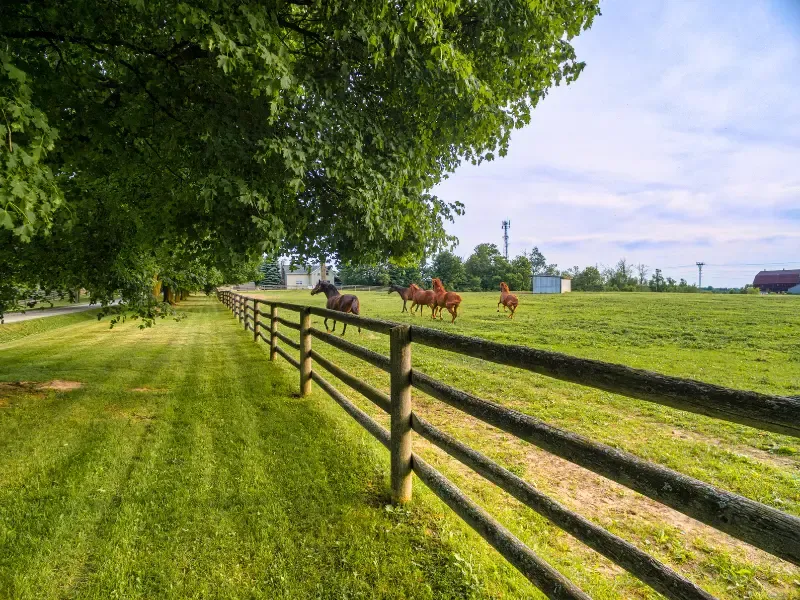
Protecting Your Horse from Founder on Spring Grass
Spring is a beautiful season with fresh blooms and green pastures. However, spring pastures can be a dangerous time for horses. With the arrival of lush green grass in springtime comes the risk of founder, a progressive form of laminitis. Protecting your horse from founder is crucial to avoid further health complications.
You may think that green grass would be a treat for horses, but it can pose a substantial health risk. Founder occurs when the horse’s hoof becomes inflamed, often due to overconsumption of rich spring grass, and the most distal bone rotates towards the ground. With proper management and awareness, you can help your horse navigate this seasonal pasture change and enjoy spring safely. Here are some essential tips from High Caliber Performance equine veterinary services to help you prevent founder on spring grass.
Introduce Horses to Spring Grass Over Time
When transitioning your horse from a winter diet to a spring pasture, it is essential to do so gradually to avoid shocking their system and increasing the risk of eating a large amount of new grass. Introduce them to slowly grazing on a spring pasture to allow their digestive system to adjust to the richer forage. Start with short turnout periods in the morning and gradually increase the duration over several weeks. This will help your horse make the transition to green pastures more safely.
Practice Weight Management with Your Horse
It is vital to keep track of your horse’s body score and weight to maintain a healthy condition. Overweight horses are at a higher risk of developing laminitis; therefore, their diet and exercise regimen should be adjusted accordingly to prevent weight gain.
Ensure Your Horse Gets Consistent Exercise
Regular exercise not only helps maintain a healthy weight but also improves circulation and hoof health, reducing the risk of laminitis and founder. Incorporate a consistent exercise regimen that includes ridden work and turnouts in a safe environment.
Limit Your Horse’s Grazing Time
Consider implementing controlled grazing practices to manage your horse’s sugar intake. This can be done by using a grazing muzzle or restricting access to the pasture during peak sugar times, such as late afternoon when sugar levels are at their highest. Best times to graze are between 3AM and 10AM when sugar content is lowest. You may also want to explore alternative forage sources. A dry lot or supplementing your horse’s diet with hay to balance nutrient intake could be beneficial.
Ensure Your Horse Has Healthy Forage Options
To fulfill your horse’s innate grazing instinct, ensure it has access to excellent quality forage throughout the day. This can also help prevent overeating of spring grass. High-fiber forage, found in certain types of hay, can help neutralize the effects of rich pasture and promote healthy digestion.
Mow Pasture Grass Regularly
It is crucial to monitor your pasture’s condition closely, especially during spring. During this season, grass can grow very quickly and contain a high sugar level, which can be a significant cause of founder. To prevent this, mowing or rotating your pastures frequently is recommended to keep the grass at an appropriate length and reduce its sugar content.
Protecting Your Horse from Founder with High Caliber Performance
If you are worried about your horse’s risk of founder or unsure how to manage its diet and grazing, please feel free to contact the professional equine veterinary team at High Caliber Performance. Our team can provide personalized recommendations on whether your grass should be tested, the proper hay your horse needs, managing a grazing schedule and diet, setting up a solid exercise regimen, and more. Do not hesitate to contact us for guidance.